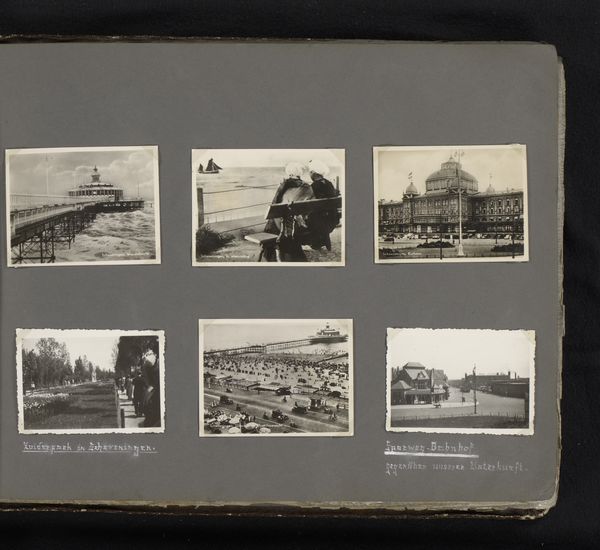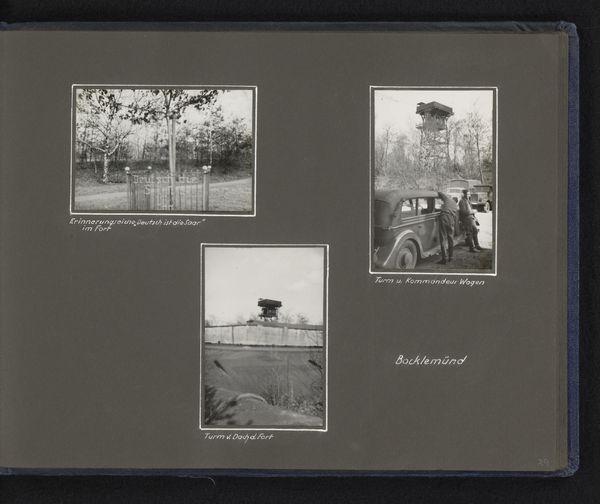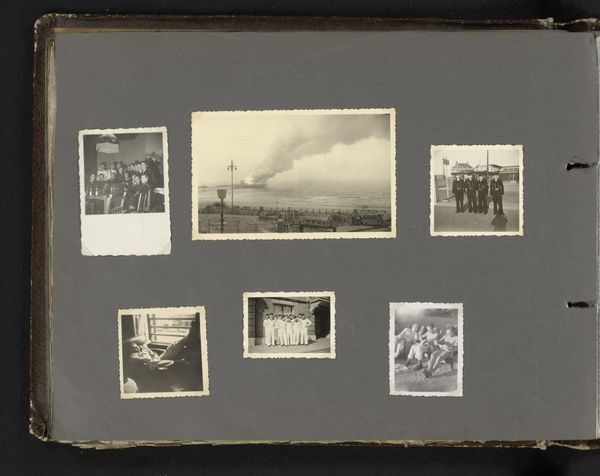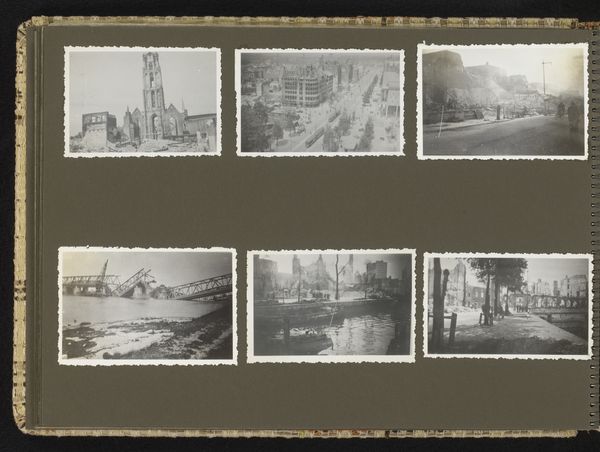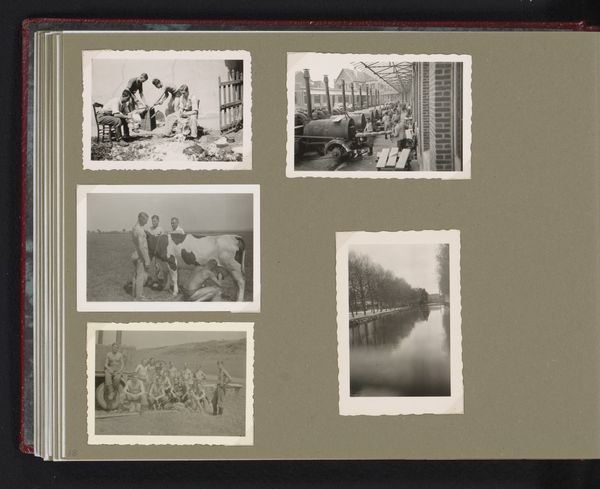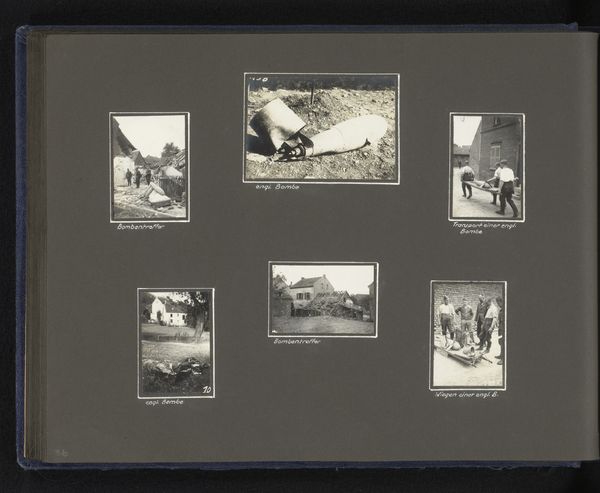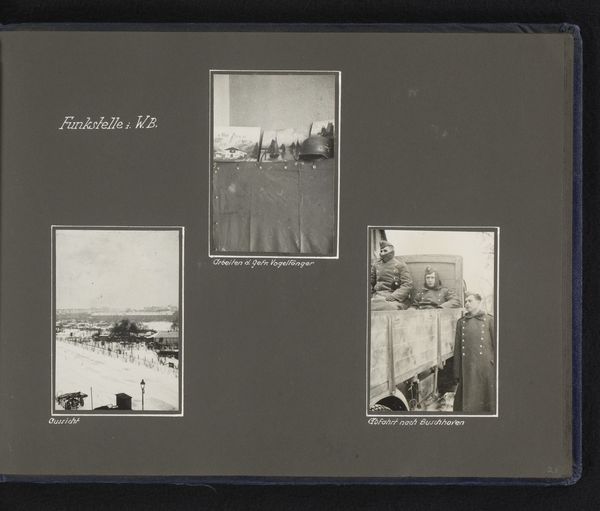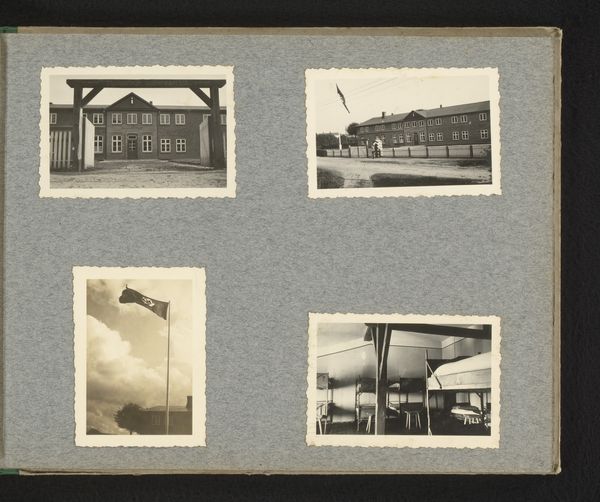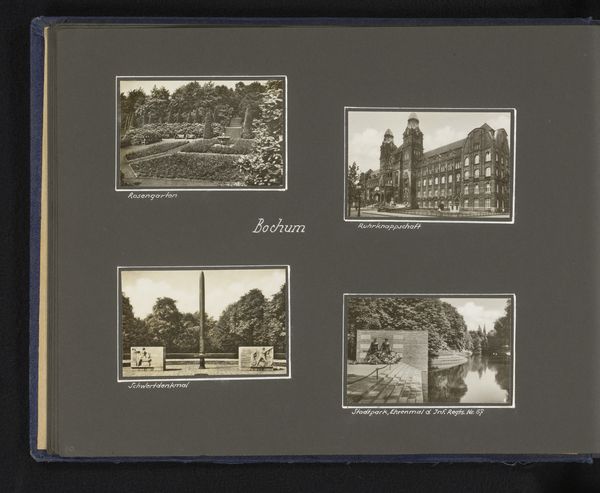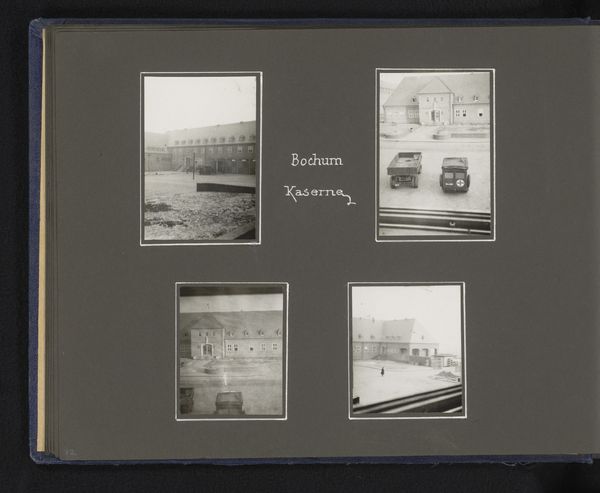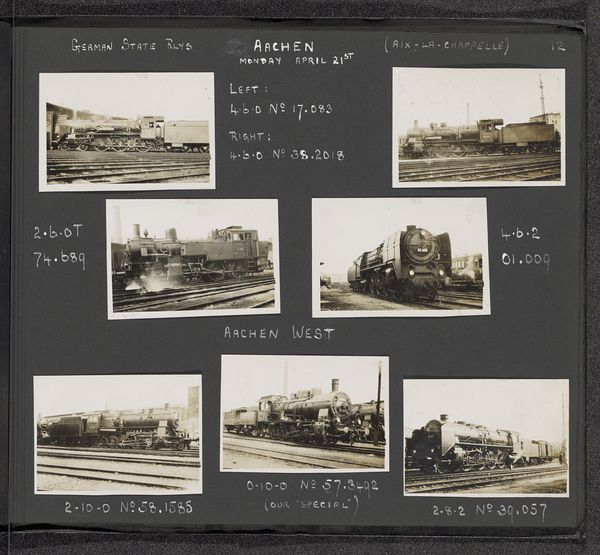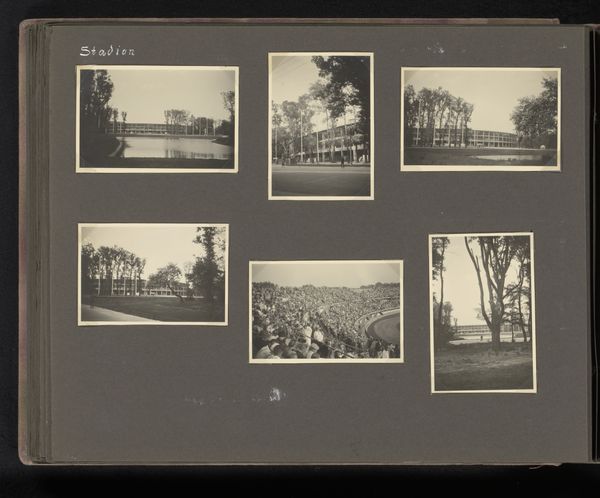
#
muted dark tone
#
muted colour palette
#
stone
#
sculpture
#
memorial
#
dark composition
#
unrealistic statue
#
dark colour palette
#
muted colour
#
statue
Dimensions: height 55 mm, width 85 mm, height 220 mm, width 290 mm
Copyright: Rijks Museum: Open Domain
Curator: This is an image titled "Bochum," potentially from 1939, found here in the Rijksmuseum. It appears to be a photo album page of factory exteriors and a castle in black and white. Editor: It strikes me as stark, almost foreboding. The dark palette certainly contributes to this mood, giving it an ominous tone. Curator: Given the probable date, it's hard not to see it through the lens of pre-war Germany. Bochum was, and still is, a major industrial hub, heavily involved in coal mining and steel production. These photos could represent the economic and industrial build-up supporting the military ambitions of the Third Reich. The inclusion of the castle, Burg Blankenstein, adds a layer— perhaps an intentional connection to German heritage and power. Editor: Interesting. From a formal standpoint, notice how the industrial images repeat vertical lines and shapes, stacks and stacks, implying the density of those locations. The use of a limited grayscale strengthens the industrial feel, reducing the individual parts into mere elements within the totality of the industrialization machine. Curator: The stark contrast is significant, too. These are not romanticized industrial landscapes, but rather documentary-style images, likely serving a very different purpose than aesthetic pleasure. Editor: Perhaps it serves to give importance to the function of industry while dehumanizing what happens inside. Curator: Absolutely. It is vital we view such images, no matter how seemingly straightforward, within their socio-political contexts. What is seen and unseen, shown and not, becomes critically relevant in interpreting visual documentation of the period. This artwork also functions as a document of how the identity and strength of Bochum were manufactured, for good and ill. Editor: Thinking of it as a record now, this record makes me want to return and view all the structures again for their geometric properties, noting where light meets the different textures presented, creating dynamic patterns within an otherwise somber setting. Curator: Exactly. It allows us to pose meaningful questions about the era's visual rhetoric, and how it was implicated in broader political narratives.
Comments
No comments
Be the first to comment and join the conversation on the ultimate creative platform.
